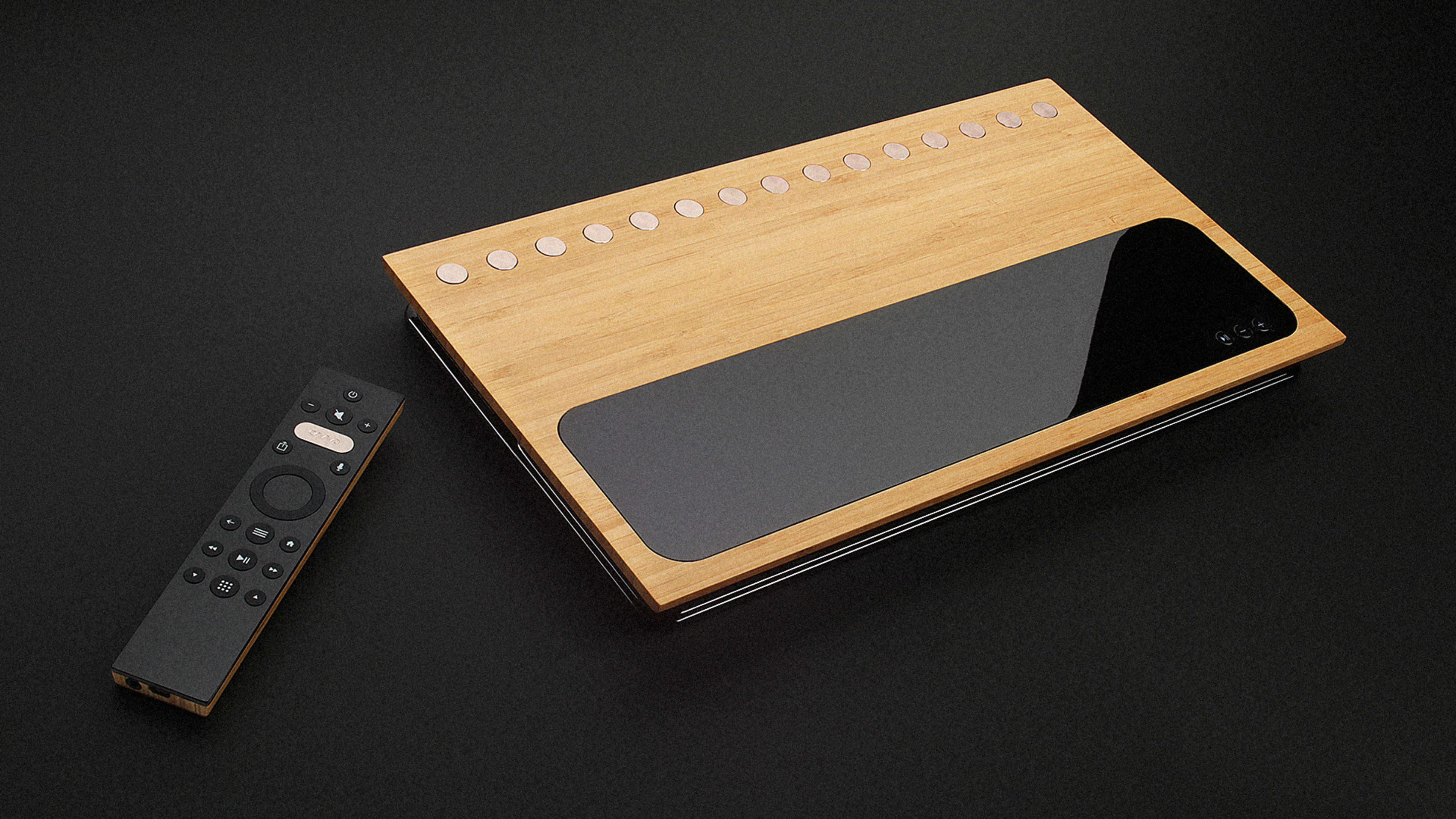In a world of ubiquitous connectivity, TV has become disconnected. Instead of just a dumb old cable box, you might use a DVR, on-demand streaming, your Hulu and Netflix subscriptions, and maybe some movies you bought on iTunes. And all these services might be spread across an Amazon Fire Stick, Apple TV, Roku box, or gaming console. Meanwhile, all you want to do is watch Zoolander again–and watch it for free, naturally, since you’re already paying for it in this pile of monthly payments.
That’s the premise behind Caavo. Caavo is essentially the world’s smartest switcher. That means it’s not a TV, and it’s not another streaming box, either. It’s a $400 hub with 8 HDMI ports. Not only is the industrial design particularly fetching–your tangle of cords is hidden beneath mahogany and tigerwood veneers designed by New Deal Design–it’s so dang good at its job that, by the end of a short demo, you’ll probably want one of your own. That’s because Caavo lets you hop between content with your voice, your existing remotes, or your phone, all without relying on yet another overwhelming screen UI.
Think of it as a translator that gets all your media services speaking the same language.
Let me explain. You can hold up the Caavo remote and say, “Watch Frozen.” The TV will turn on. And within a few seconds, Frozen will appear, right where you left off, on your Amazon Fire Stick. Why? Caavo knows you bought it there, so it won’t even bother to recommend the purchase on iTunes.
Then you might say, “Watch Portlandia,” and the Caavo will switch to your Xbox and pull up Netflix. Or “Watch the Cooking Channel,” and it will switch to your Dish and pull it up. Of course, your old remotes will still work, too–and Caavo works seamlessly with smartphones. (More on all that in a minute.)
Caavo is the sort of living-room-loving, TV-first system that could only be constructed by a team assembled by the late Blake Krikorian, the founder behind the Sling Media and Slingbox–the original hack to share your home cable subscription over the internet. It’s led by Andrew Einaudi (who hails from Sling Media, Dish, and Xbox), Ashish Aggarwal (a pioneer on MP3 who went to Harman before founding his own startup, Violet3D ), and Vinod Gopinath (founder of the social TV tablet app shufflr.tv). They’re a startup, sure, but with firm roots within the existing infrastructure of television.
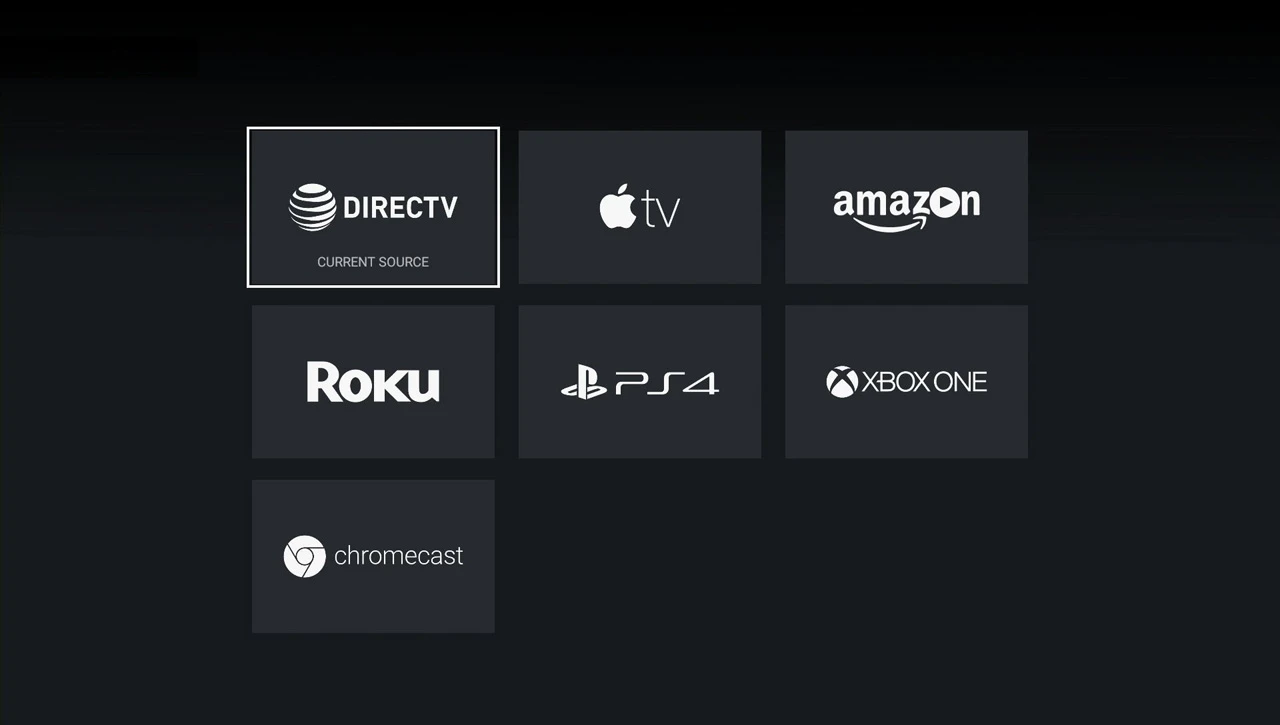
The cleverness of Caavo is that it’s invisibly pulled information from you various accounts–ranging from your Dish DVR to your Amazon purchases. This is much harder than it sounds, sometimes requiring Caavo to tread through the internet to ping your actual set-top box to find out what shows live inside. Each partner Caavo supports requires a distinct juggling of technological standards, taxonomies, and APIs, which is precisely why nobody has served this need all that well so far.
This allows Caavo to design a user experience centered around content rather than platform. You choose what you want to watch, and you leave it to Caavo to figure out where it may be hiding. Even Caavo’s minimal, black menu bars mirror this intent. Caavo is, essentially, trying not to exist on your screen at all. “It’s important to know we don’t have a superbrowse experience,” says Einaudi of its lack of more apps and complicated directories. “I think people are already overwhelmed with content. We make it easier to get to what you’re already watching.”
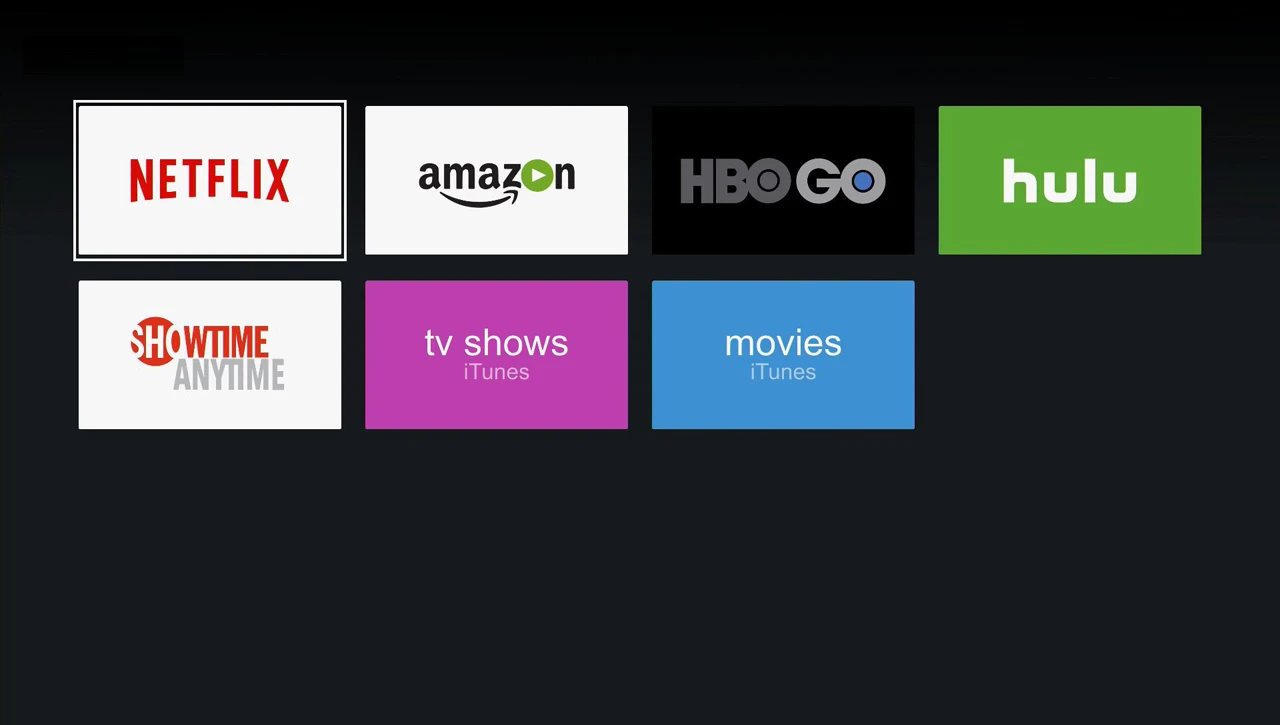
The other brilliant design detail is that Caavo’s UI titrates to the user’s own preferences. Yes, Caavo can hear your requests through an Amazon Echo or its own remote. But it also works as a very smart version of dumb old TV. “The living room is a shared experience. There are so many remotes. We said, ‘don’t get rid of them,'” says Einaudi. He picks up a DirecTV remote, aims it at the TV while hitting a button, and the inputs swap over to show him the DirecTV feed and menu. (How’d that work? The Caavo box recognized the remote’s unique infrared signal, and it figured the user must want to be watching that, so it told the TV to swap inputs via HDMI.)
This no-learning-curve UI is particularly useful for when a friend is over at your house and has no idea how to use your particular setup. Caavo basically middleware UI–less a interface of its own than a way to ensure whatever you want on the screen is on it. Likewise, if some millennial or Gen Z-er in the household wants to share an iPhone video via Airplay, or load something up on Chromecast, Caavo can recognize that, too, swapping to the correct input to pull this content up.
But do millennials care about watching things on a television rather than a phone or tablet? When I ask, Einaudi counters that Caavo’s pitch isn’t about age. They’re betting that everyone will prefer watching their content on the big screen, as long as it’s dead simple to do. “We looked at kids, and people who might not really have TV, and how can we get them watching on the big glass,” he says. “No one is going to argue that a big TV is the best way.”
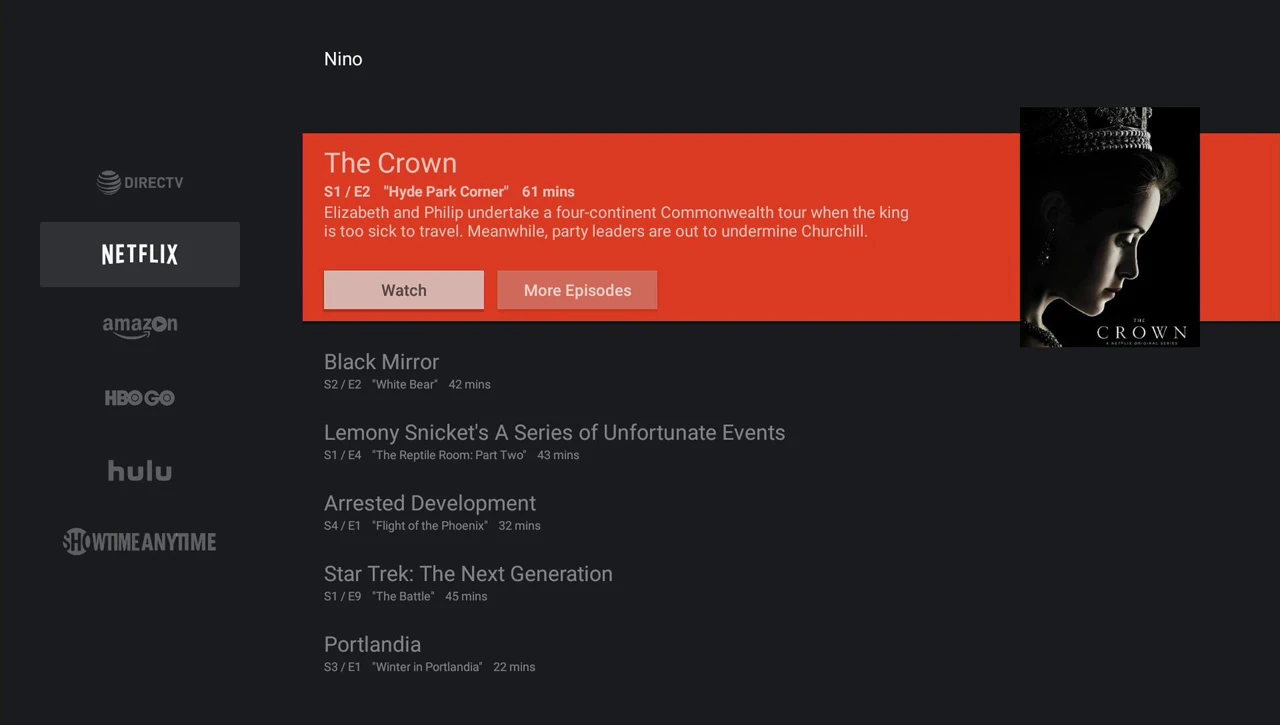
Indeed, even in the age of the internet, TV adoption is still growing, and networks are more than hanging on. As Gadi Amit, founder of the design firm who worked on Caavo, put it to me years ago, there is something unparalleled about the mindless experience of weeknight television, that you can sit back at the end of a long day and not make more decisions. It’s actually a restorative practice.
Caavo respects that mindlessness in a way most modern media platforms don’t, but even still, it’s hard to see how the business could succeed. The company is launching with a limited edition of 5,000 units, aimed at the high-end home theater market. “It’s always difficult to assess,” says Gopinath of the company’s viability. “We know there’s a market today. But it really is about, if we can do this, will user habits change enough that they’re able to consume more beautiful content [on their TV].
“The next five years is the golden age of content,” he continues, pointing to the investment of companies like Netflix to create original series. “We want to believe if we do it right and make it accessible to consumers, it may create a huge explosion in use case.”
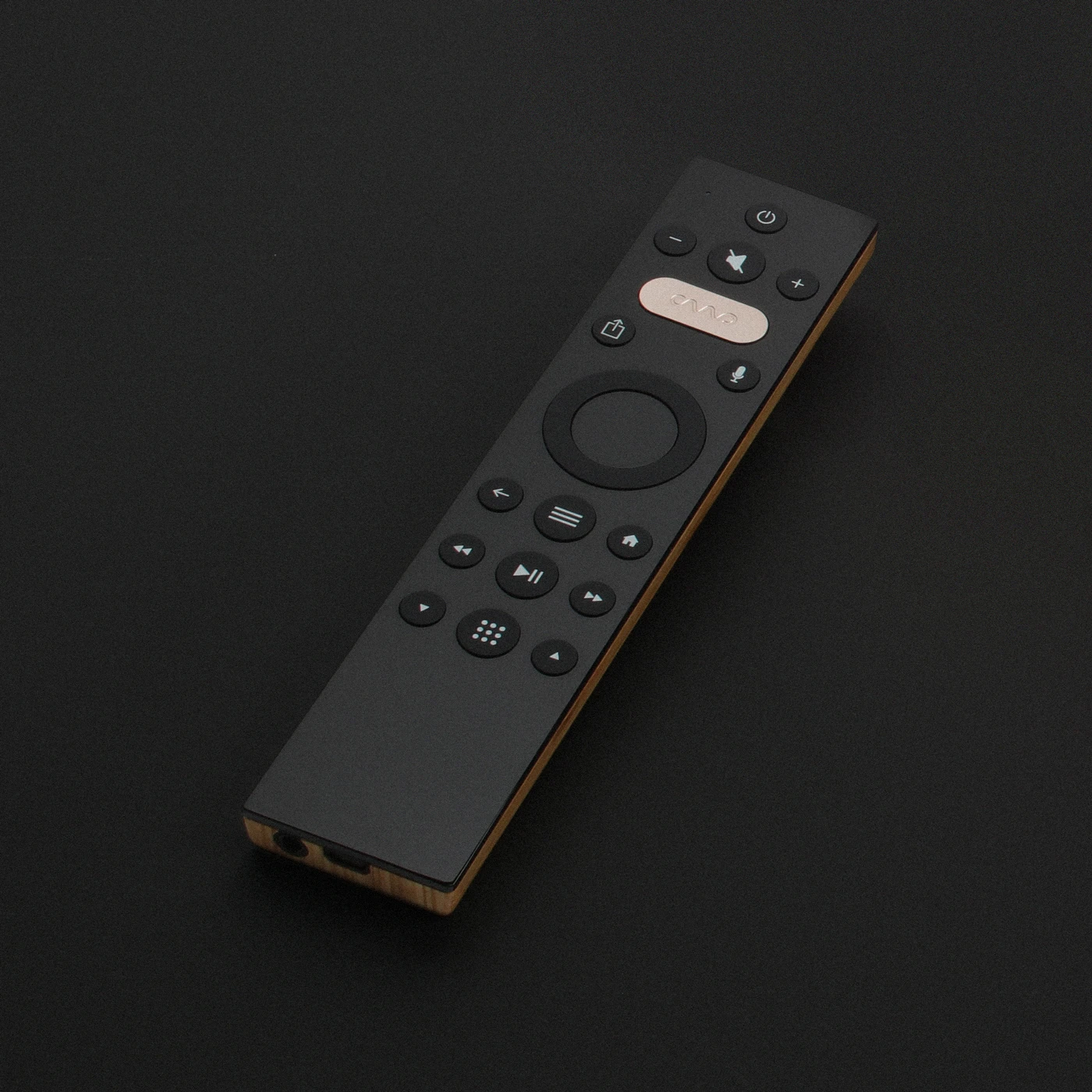
He suggests that Caavo could be sold in different variations–perhaps a lower end model might make it to market. But ultimately, Caavo is a lot more than an HDMI switching box; it’s a brilliant cloud service that’s figured out a language to connect all of these different services and devices under one umbrella.
As beautiful as those wooden remotes may be (oh, and did you know, that little tab on the back lifts the remote off your table, just a bit, so it’s easier to grab?), Caavo’s truest manifestation would be to disappear entirely. When I suggest that Caavo would make more sense inside a television, licensed to various manufacturers, Gopinath agrees.
“But knowing the TV industry, I don’t know if they’re that bold to embrace this,” he admits. “Next year, we might have to go make a TV. Why go make one more box?”
Recognize your brand’s excellence by applying to this year’s Brands That Matter Awards before the early-rate deadline, May 3.
